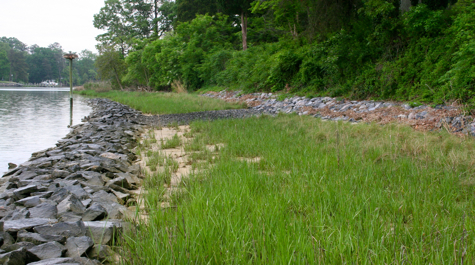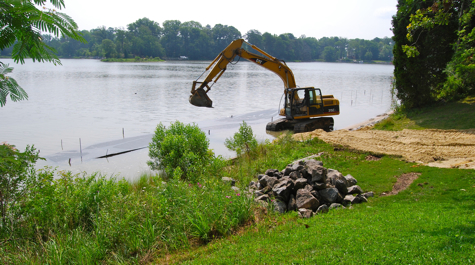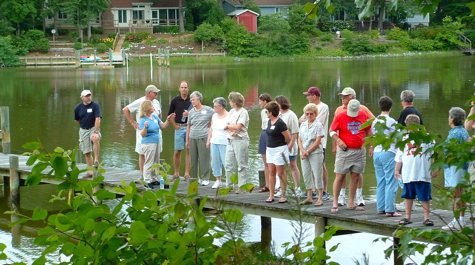Living Shorelines
What have they done for you lately?
Living shorelines use strategic placement of plants, stone, sand, or other structural and organic materials to reduce erosion and enhance wetland habitat. Living shorelines preserve the natural connections between water, shoreline, and uplands, thus providing better habitat for fish and other animals.
Why should they be used?
In many cases, living shorelines can provide a more effective approach to shoreline management than traditional bulkheads and rock revetments. A properly designed living shoreline can preserve the ability of the shoreline to provide shelter and food for a wide variety of organisms, and reduce the amounts of nutrients, sediments, and other pollutants carried by runoff and groundwater from uplands to rivers and the Bay. Natural shorelines can supply sand for other nearby beaches, buffer low-lying lands from floods and erosion, provide recreational and commercial opportunities, and serve as visually pleasing features for everyone in the coastal zone.
Environmental managers refer to these benefits as ecosystem services—benefits provided to humans by naturally functioning ecosystems. Generally they can be grouped into 4 broad categories: production (growing plants and animals); regulation (maintaining the water cycle and atmospheric gas balances, moderating temperatures); habitat (providing shelter and nursery areas); and information (aesthetics, recreation).
Where can they be used?
The design of a living shoreline typically involves gradual slopes along the shoreline and into the upland area to reduce the wave energy running up on the shore. It also provides suitable areas for growth of marsh grasses.
Living shoreline designs will not work in all situations. High-energy shorelines, such as those along the open ocean or those bordering the mainstem Chesapeake Bay, generally have too much wave energy to allow plants to survive in either the intertidal area or the riparian area immediately behind the intertidal zone. Living shorelines also require sufficient horizontal space to establish the low slopes necessary to establish vegetation and dissipate wave energy. This much space is sometimes not available even in very low-energy environments if the riparian area is heavily developed.
To find out more about living shorelines or see design options, visit http://ccrm.vims.edu/livingshorelines/







